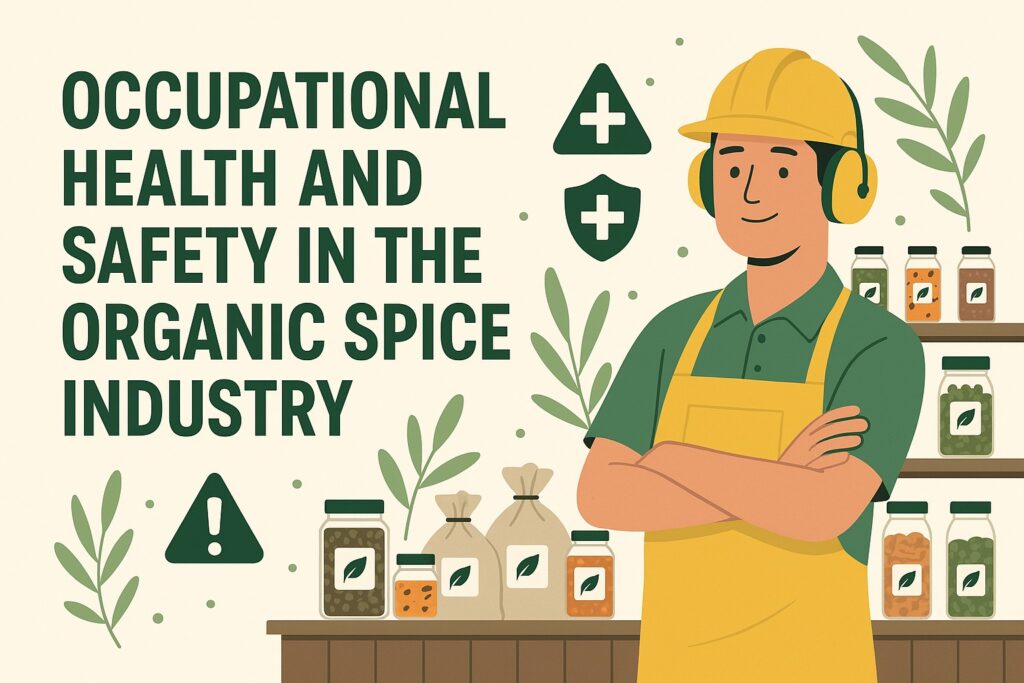The organic spice industry plays a crucial role in providing high-quality, chemical-free flavors to consumers worldwide. However, behind the scenes, ensuring the health and safety of workers involved in spice cultivation, processing, and packaging is equally essential. Occupational health and safety (OHS) practices in the organic spice sector help maintain sustainable production while protecting laborers from potential hazards.
Importance of Occupational Health and Safety in the Organic Spice Industry
Organic spice production requires intensive labor, from farming and harvesting to drying and packaging. Without proper safety measures, workers may be exposed to various risks such as dust inhalation, repetitive strain injuries, and prolonged sun exposure. Implementing strong OHS regulations ensures a safer working environment, improving both employee well-being and productivity.
Common Occupational Hazards in the Organic Spice Industry
- Exposure to Fine Particles – Grinding and processing spices release airborne particles, which can lead to respiratory issues if proper ventilation and protective gear are not used.
- Physical Strain – Manual labor, including planting, harvesting, and sorting spices, may cause musculoskeletal disorders if ergonomic practices are ignored.
- Chemical-Free but Not Risk-Free – While organic spices eliminate synthetic pesticides, handling raw spices like chili and turmeric can still cause skin irritation and allergic reactions.
- Heat and Sun Exposure – Farmers working long hours under direct sunlight are prone to dehydration and heat-related illnesses.
- Fire Hazards – Spices like cinnamon and chili powder are combustible, requiring proper fire prevention strategies in storage and processing facilities.
Best Practices for Occupational Health and Safety in the Organic Spice Industry
- Proper Ventilation Systems – Ensuring well-ventilated workspaces reduces the risk of respiratory problems caused by fine spice dust.
- Protective Gear – Providing masks, gloves, and protective clothing shields workers from potential allergens and irritants.
- Ergonomic Training – Educating workers on proper lifting techniques and posture minimizes the risk of strain injuries.
- Hydration and Rest Breaks – Encouraging regular water intake and scheduled breaks reduces the impact of heat exposure.
- Safe Storage Practices – Storing spices in fire-resistant containers and maintaining organized workspaces help prevent accidents.
- First Aid and Emergency Preparedness – Having medical kits and trained personnel on-site ensures quick response to any workplace injuries.
The Role of Employers in OHS Compliance
Business owners in the organic spice sector must comply with national and international OHS standards to protect their workforce. Conducting regular safety audits, providing employee training, and fostering a safety-first culture contribute to a more secure and ethical workplace.
Conclusion
A strong occupational health and safety framework in the organic spice industry not only safeguards workers but also enhances product quality and business sustainability. By prioritizing worker well-being, companies can ensure that the journey from farm to table remains safe, ethical, and truly organic.
